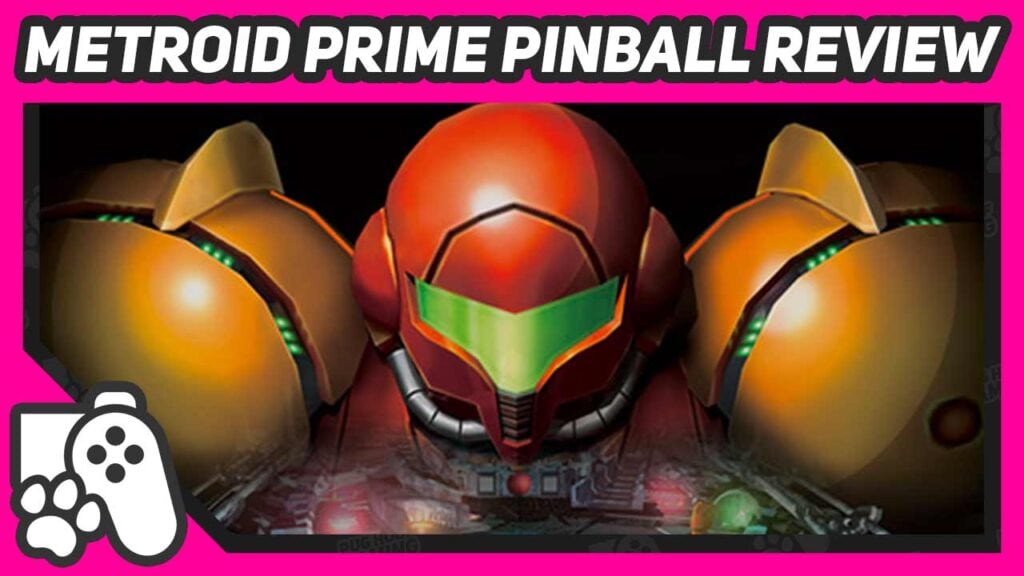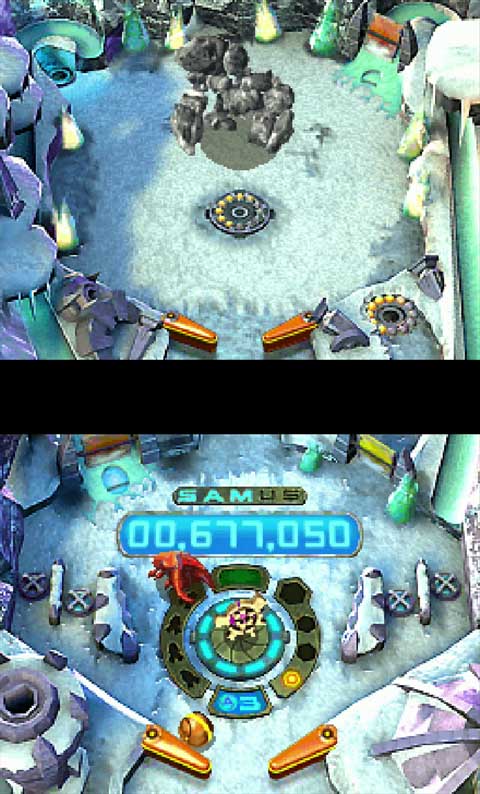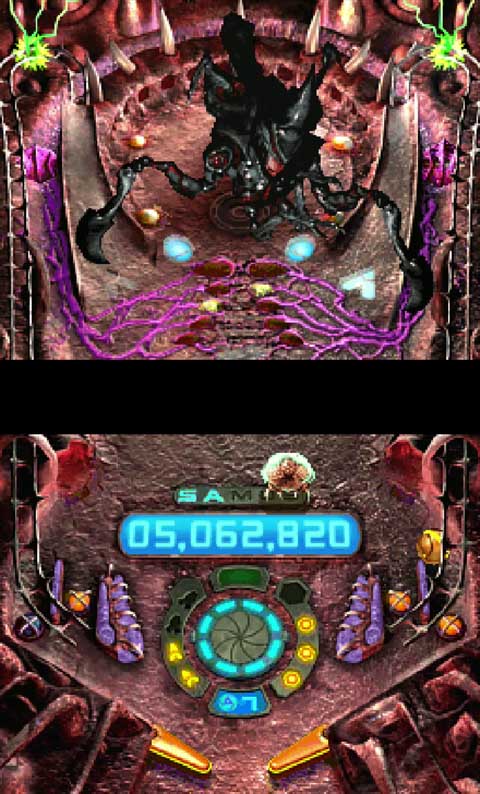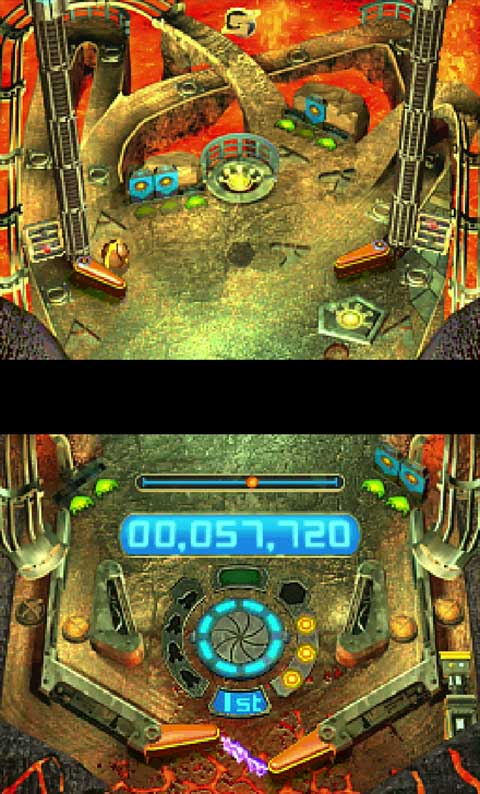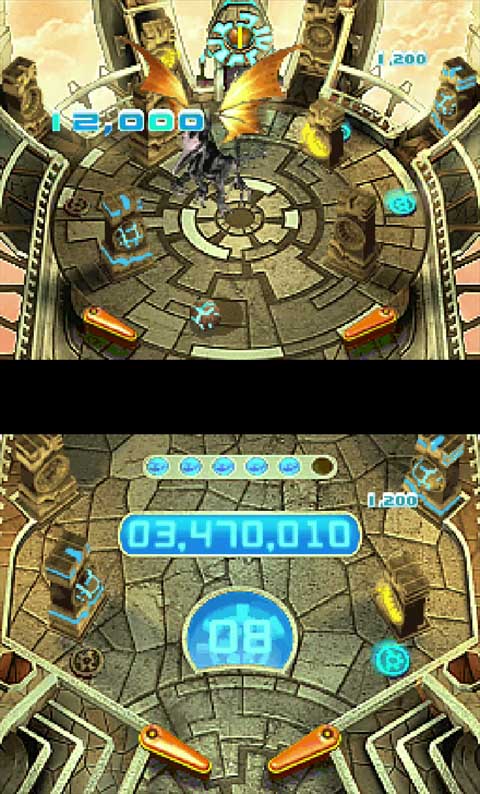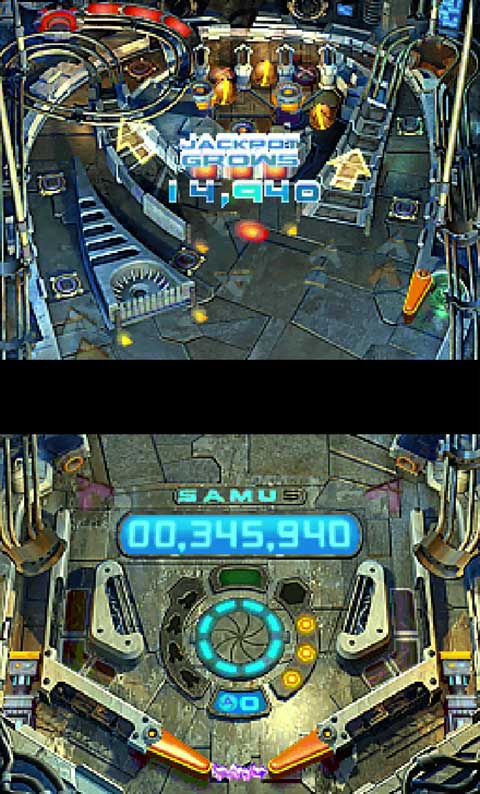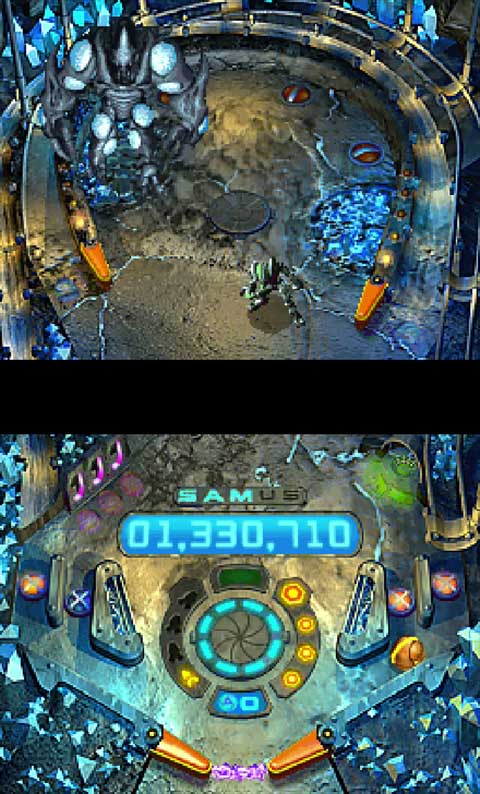There comes a time in every popular gaming franchise’s life, where it must spread its wings and fly. To make bold new endeavours in an attempt to give fans more, keep its name out there, and hopefully attract new fans – Yes, even games sell out. For every Super Mario World, there’s a Mario is Missing. A Link’s Crossbow Training for every Link To The Past. And yes, even Metroid Prime, has its Metroid Prime Pinball.
Not that Nintendo was averse to pinball games, to begin with. Kirby got his Pinball Land, Pokemon got two different Pinball games, and even Mario got his own Pinball Land, after making an appearance in the early NES Pinball game. Yup. Nintendo loves their shiny balls.
Metroid Prime Pinball Review
But let’s give Metroid Prime Pinball the benefit of the doubt, shall we? After all, a character who can literally curl up into a shiny ball like Samus makes a more likely Pinball than a tubby Italian plumber. This Nintendo DS game is essentially, a rough retelling of Metroid Prime through seven tables of flipper flippering action – Two of them being more traditional pinball tables, with the remaining four being arena boss fights in table form and the remaining table being Multiplayer specific.
The main Multi-Mission story mode gives players the choice of one of the two main tables – The Pirate Frigate, and Tallon Overworld. These fully featured tables have all the features you would expect – Flippers, rails, lots of flashing lights and loud noises, and a whole heap of ways to score points. However, the goal, much like it was in Metroid Prime, is to obtain 12 Artifacts that unlock the Artefact Temple table, which is the entrance to the Impact Crater – But more on that later. These artefacts are earned by completing certain mission objectives on each table, with the initial two tables featuring the lion share of items. These Mission Objectives are special mini-games that take place on each table, and each one has three levels of difficulty – You’ll get bonus points for completing them, but many of them will also give you a valuable artefact. These Missions are instigated through various means, by hitting a hologram on one of the two main adventure tables, or by propelling Samus into particular ramps.
These missions are in some cases divergent to traditional pinball gameplay, too. Wall Jump requires the player to perform a tricky Wall Jump manoeuvre by pressing the left and right flipper buttons in sequence. Shriekbat Shootout places Samus in the centre of the table, with the player having to rotate her while she auto fires, to destroy a horde of swooping Shriekbats. Other missions revolve around defeating every enemy on the table in a time limit or activating certain jackpots on the table. There’s definitely a bit more going on here than your standard real-life pinball table, as you’ll soon see.
After attempting a few of the missions, you’ll get the option to move onto another table of your choosing by hitting a hologram with an Up arrow. This gives the player the opportunity to travel to another table of their choosing, from Tallon Overworld, Pirate Frigate, Phazon Mines or Phendrana Drifts. This cycle continues until the player has all 12 artefacts and can tackle the remaining Artefact Temple and Impact Crater tables – Not as easy as it sounds.
Not only does Samus have finite balls, but she also has finite health, replenishing it by picking up items left by fallen enemies, or via other means. With some real damaging enemies out there, this is a very tricky take on pinball.
Thankfully, Samus is able to pick up a few powerups as she goes. As well as permanent upgrades like Power Bombs and Missiles, finding a morph ball slot triggers a reel that selects a random temporary powerup, with everything from health recharges and a force field that blocks the gap between the flippers, to ammo recharges and more.
From the two tables selectable at the beginning of the Multi-Mission mode, the Pirate Frigate table is a nice way to start the game. You’ve got some very typical pinball design, complete with a single flipper at the top of the table. Meanwhile, it’s backed by a pretty awesome rock take on Brinstar’s theme.
Tallon Overworld has just a single set of flippers, and if you’re lucky you’ll propel yourself high enough to find this table’s Wall Jump minigame for an easy Artefact.
Phendrana Drifts is the home of two sets of flippers, plus the first of several upgrades – The Power Bomb. However, collecting this item awakens Thargus, this table’s boss battle. Sounds like a good excuse to use those new Power Bombs.
Phazon Mines is the home of the Missile upgrade, but also a very angry Omega Pirate boss that has a nasty shockwave attack that can easily lose you some balls.
Collecting 12 Artefacts and travelling to the Artefact Temple gives you the trickiest challenge yet – A hideous 12-ball multi-ball session that requires you to fire pinballs into 12 really tricky to reach slots, all whilst Meta Ridley is firing at you. Run out of balls and you’ll be forced to go to another table before you can return here again.
If you manage to make your way past that gauntlet, you get a crack at the Impact Crater and the final upgrades – The Force Ball. Plus, a battle with both of Metroid Prime’s forms. Beat Prime and your reward are the end credits, followed by the chance to keep playing on another table and repeat everything all over again, as the difficulty level is increased.
As for the last table, Magmoor Caverns is only available as part of local wireless multiplayer mode, where players race to score 100,000 points first, with some table functions throwing Metroids at your opponent to hinder them. You can actually play this table on your own if you just host a multiplayer game with no other players, but it’s not a particularly fun table to play by yourself.
This is not the place to go for any sort of story – This is pure pinball through and through. For better or worse, that also dictates your own enjoyment of Metroid Prime Pinball. I don’t mind the occasional go of a real pinball table, but I always find digital pinball games a little bit lacking in excitement, and as much as this game tries to remedy that, it doesn’t really succeed.
Here is a perfectly fine pinball game, and if you like pinball you’ll definitely get a kick out of Metroid Prime Pinball. It’s just that there isn’t a great deal of variety here, and it’s very easy to get bored. There are only two proper pinballs tables to play with, and it takes just a few minutes to everything on those tables, plus the two initial boss tables. The only real challenge lies with the Artefact Temple and its crazy multiball mission, which is an excruciating feat that requires a ridiculous amount of luck. I cheesed the hell out of it with save states, and I don’t feel bad about it at all. It’s arguably one of the toughest challenges in the entire Metroid series, due to it practically being more a matter of luck than any sort of skill at times.
There are clever ideas with the missions, and I can’t fault the developers for the way they’ve tried to fit so many elements of Metroid Prime into the confines of a pinball game. Honestly, they did a great job, and this game’s existence doesn’t make me angry because it’s a perfectly fine pinball game for the most part.
The graphics are pre-rendered and are pretty well animated, looking great on the small-sized DS screen (and even on the larger DSi XL), and the music is serviceable, though nothing beats the Pirate Frigate’s theme. My only real technical fault is nothing to do with the game, but a technical annoyance with the DS in general. There’s a gap between the two screens, and many games that rely on two screens for one field of view, such as this one, allow for that gap between the two screens. In Metroid Prime Pinball, this becomes the problem, as critical elements of gameplay can be obscured in this gap, from enemies to the pinball itself. This makes it very difficult to react to some situations, causing a lot of unnecessarily lost balls.
Metroid Prime Pinball was the first game to utilise the Nintendo DS’s Rumble Pak, a small cartridge that fits in the GBA slot of DS and DS Lite systems. In North America, the accessory was bundled with this game, but in Europe due to the long delay the game suffered, we had it packaged with the puzzle game Actionloop instead. The Rumble Pak provides force feedback that works well with Metroid Prime Pinball, but I wouldn’t really call it a game-changing addition – The Rumble Pak itself makes an annoying buzzing noise and doesn’t quite have enough power to really make you feel like you’re really playing pinball. As an accessory, it’s perfectly fine in what it sets out to achieve, but few people will be satisfied.
Which is a good way to summarise this Metroid Prime Pinball review, as it happens. It’s hard to really class it as any more than a pinball game in Metroid clothing, with its few good ideas failing to elevate this as any more than a 15-minute timewaster at best. Other than going for high scores in Multi-Mission or Single table modes, it’s as limited as any other pinball game. I feel like if this game had a bit more meat to it, it would have the potential to be something better-regarded. As it stands, it’s just a perfectly fine pinball game, if you’re into that sort of thing.
Next week, for the third week in a row I’ll be covering a Nintendo DS game – This time around, it’s the full version of Metroid Prime Hunters. Join me as I figure out if last week’s First Hunt demo turned out to be a good game or not. See you next time!
